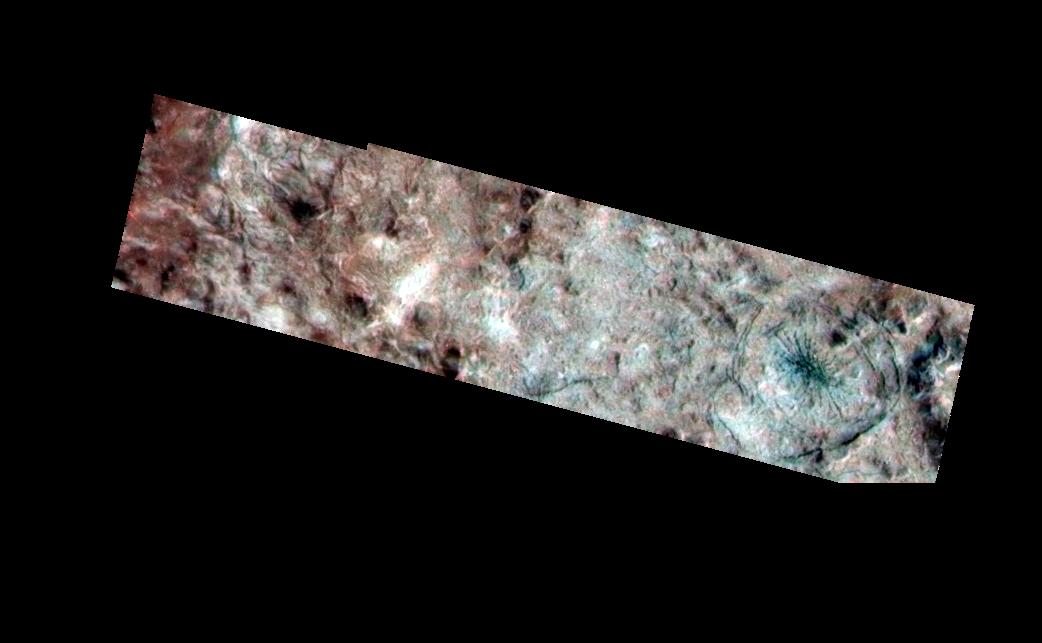All Resources
Mannann'an Crater

This composite view taken by NASA's Galileo spacecraft shows the rim and interior of the impact crater, Mannann'an, on Jupiter's moon, Europa. A high resolution image (66 feet or 20 meters per picture element) was combined with lower resolution (262 feet or 80 meters per picture element) color images taken through violet, green and near-infrared filters, to produce this synthetic color composite image. The color data can be used to distinguish between regions of purer (clean) and more contaminated (dirty) ice on the surface, and also offers information on the size of the ice grains. The reddish brown material is thought to be dirty ice, while the bluish areas inside the crater are purer ice. The crater rim is on the left at the boundary between the reddish brown material and the gray material.
The high resolution data show small features inside the crater, including concentric fractures and a spider-like set of fractures near the right (east) edge of the image. For a more regional perspective, the Mannann'an crater can be seen as a large circular feature with bright rays in the lower left corner of a regional image from Galileo's first orbit of Jupiter in June 1996.
North is to the top of the picture and the Sun illuminates the scene from the east (right). The image, centered at 3 degrees north latitude and 240 degrees west longitude, covers an area approximately 11 by 2.5 miles (18 by 4 kilometers). The finest details that can be discerned in this picture are about 44 yards (40 meters) across. The images were taken by the spacecraft's onboard solid state imaging camera when Galileo flew by Europa on March 29, 1998 at a distance of 1,200 miles (1,934 kilometers).


